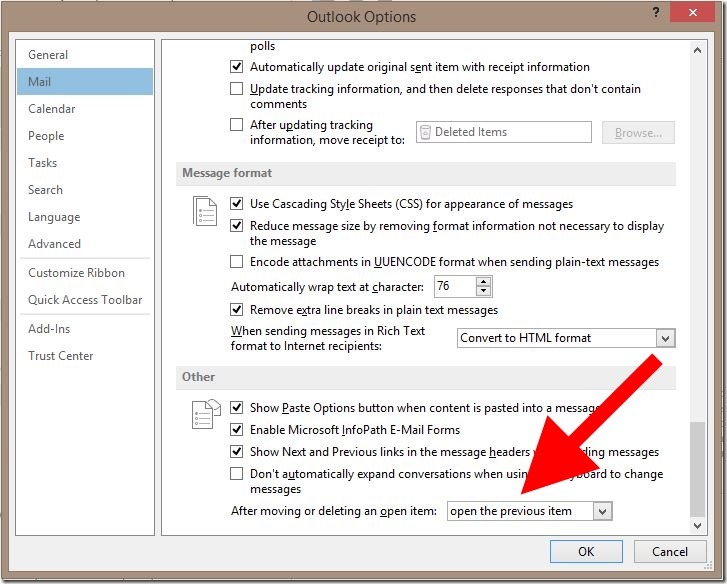I wanted to outline a process that I use to manage my email using
Outlook. I have used Outlook since 1997 and have never really got on
with it too well. Despite best intentions, I always end up with a huge
inbox with a bunch of automated rules for moving emails to the correct
folder when it arrives.
I want to start by outlining the system I have tried for 10 years that
ultimately does not work.
Old System
When Gmail was released in 2004, it threw away the convention of folders
and replaced them with labels. Even for a die hard Microsoft-y like me,
it is hard to deny that labels are a better system of organisation than
folders. I will illustrate why below.
The system I used had the following folder structure:
- Inbox\ ----- Alerts\ --------- … A series of folders representing various alert emails I would get…\
- Companies\ ----- A – F\ ------------ Amazon\ ------------ … Other companies …\ ------ G – M\ ------------ … Companies from G – M …\
- Clients\ ----- … A folder for each client …\
- Colleagues\ ----- … A folders for each colleague …\
- Personal\ ----- Companies\ --------- Amazon\ --------- … Other Companies …\ ----- People\ --------- Family\ ------------- … A folder for each family member …\
As you can see, this gets complicated fast. There were a number of
issues with this approach.
- An email never neatly fits into a single folder. For example, I
would get an email from a colleague, about a client. Does that email go into Colleague –> Name or does it go into Clients –> Client Name? This is more of a limitation of the folders system and Gmail's labels solves this elegantly, simply by applying two labels to the email. - The automated rules that would move email, particularly into the
Alerts folder would result in my missing a fair few emails. It is surprisingly hard to get email rules exactly right. There are often emails that slip through the cracks and end up getting filed when they shouldn’t. - This level of management requires a manual filing of each email once
it has been dealt with. Despite best intentions, this always starts to lag and the result is a huge inbox. I would probably clear it out once a year, but it would always go back to being a mess.
My Solution
I decided there were a number of simple rules I could follow to help me
organise my emails.
- Keep the inbox as a to-do list. Only email that has yet to be dealt
with should be in the inbox. If there is nothing to do, the inbox should be empty. - Remove folders, rely on search. Outlook search is not the best or
the fastest, but I decided to rely on search as my primary method of locating emails. - Remove automated email rules.
- Process my email in date order (oldest –> newest)
The result is as follows:
- *Inbox\ *---- Business\ ---- Personal
Much cleaner. I doubt it needs explanation, but all business email goes
into the business folder and all personal email goes into the personal
folder.
I also created two new Quick Steps to aid with this process.
- Move to Personal
- Move to Business
These quick steps do exactly what they suggest. They move an email to
either the Business or Personal folders with a single click.
See
here
how to create your own Quick Steps.
Remember: Only move email out of the inbox when you have processed it.
Conversation View really assists with this style of working, because you
can reply to an email, then move it into the business folder. When the
other party then replies, you will see the entire conversation
regardless of the folder the other emails are in. That is a crucial
feature and if you don’t use Conversation View, I would encourage you to
use it for 2 weeks consistently. It is invaluable to me now.
Process email in date order
The final part was to process email in date order. The issue here is
that when you use one of the quick steps or delete an email and the
message disappears from the inbox, the default behaviour in outlook is
to highlight the next oldest message. If we want to work through our
email in date order, then we need Outlook to highlight the previous
(newer) message in the list.
This might seem like a trivial point, but it really assists the work flow.
You can change this setting by going into File –> Options –>
Mail. Scroll to the bottom and you’ll see this.
Good luck with managing your email. Let me know how you get on.

